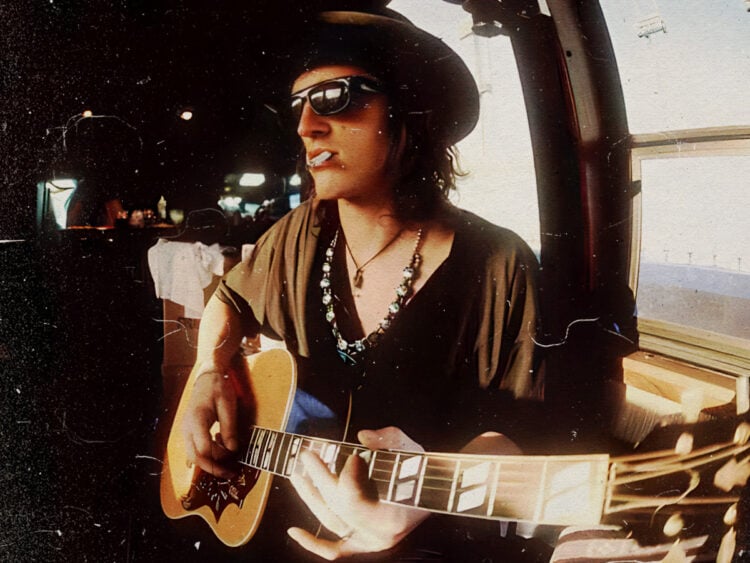A Bridge Too Far: Izzy Stradlin’s Disastrous Almost-Return to Guns N’ Roses Left Fans Wondering What Could Have Been…
In the unpredictable world of rock and roll reunions, few stories sting as much as the near-return of Izzy Stradlin to Guns N’ Roses—a fleeting possibility that collapsed under the weight of conflicting egos, logistical headaches, and the scars of old wounds. What could have been a triumphant restoration of the band’s classic chemistry instead became another frustrating chapter in their long, volatile history.
When Guns N’ Roses announced their massive “Not in This Lifetime” reunion tour in 2016, the headlines were electric. Axl Rose, Slash, and Duff McKagan were finally sharing the stage again after decades apart. Fans immediately began speculating about the missing piece of the puzzle: rhythm guitarist and founding member Izzy Stradlin, the understated creative force behind much of the band’s early songwriting magic.
For a brief moment, it looked like it might actually happen. Izzy, famously elusive and uninterested in the trappings of celebrity, reconnected with the band in the early planning stages. Sources close to the group hinted at “serious conversations” about his involvement. For diehards who revered his role in penning hits like Patience, Don’t Cry, and You Could Be Mine, the thought of seeing him lock back into that groove with Slash was nothing short of intoxicating.
But just as quickly as the dream took shape, it began to unravel. Reports suggest disagreements over money were the first crack in the bridge. Izzy, long disillusioned by the business side of the music industry, balked at the pay structure being offered. While Axl, Slash, and Duff were positioned as the financial anchors of the tour, Izzy was allegedly presented with a supporting role, despite his foundational place in the band’s history.
True to form, Izzy made his displeasure known in his own cryptic way—via a rare public tweet that simply read: “They didn’t want to split the loot equally. Simple as that. Moving right along.” With that blunt dismissal, the window slammed shut, and the reunion carried on without him.
Fans were divided in their reactions. Some blasted the band for failing to make room for the man who helped write their most iconic songs. Others shrugged, noting Izzy’s pattern of walking away when things got too big, too messy, or too commercial. After all, he had already distanced himself from the chaos of Guns N’ Roses back in 1991, preferring a quieter solo career to the circus of stadium tours and tabloid headlines.
What makes the near-return so tantalizing is the aura Izzy still carries. Unlike other rock stars who thrive on excess, Stradlin’s mystique is rooted in restraint. He never sought the spotlight, rarely gave interviews, and seemed to value his independence over fame. Seeing him back with Guns N’ Roses, even for a handful of shows, would have been a surreal collision of past and present—a reminder of the band’s raw beginnings before the industry machine swallowed them whole.
Instead, fans got a reunion that, while commercially massive, always felt like it was missing an essential ingredient. Richard Fortus admirably filled the rhythm guitar slot, and the shows were explosive in their own right, but the intangible grit of Stradlin’s presence lingered in absentia.
Industry insiders have since described the failed reunion attempt as “a bridge too far.” The wounds between Izzy and his old bandmates may never fully heal, and the logistical demands of a worldwide stadium tour simply didn’t fit his low-key lifestyle. Where Slash and Duff embraced the spectacle, Izzy recoiled. Where Axl wanted control, Izzy wanted distance. In the end, the contradictions were irreconcilable.
Nearly a decade later, fans still debate what could have been. Would the shows have felt more authentic with Izzy’s rhythm weaving into Slash’s leads? Would the band have leaned into deeper cuts like 14 Years and Dust N’ Bones? Or would the return have ended in disaster, reopening the same fractures that drove them apart in the first place?
For now, the story of Izzy Stradlin’s almost-return remains one of rock’s great “what-ifs”—a reminder that sometimes, in the volatile chemistry of legendary bands, too many bridges have already been burned.
At least Izzy himself seems at peace, content to remain in the shadows, far from the circus, strumming on his own terms. For the rest of us, though, it’s hard not to imagine the roar of a stadium had that bridge actually been crossed.
Would you like me to make this more like breaking-style music news (fast, dramatic tone) or a long-form magazine feature (deeper, reflective analysis)?
